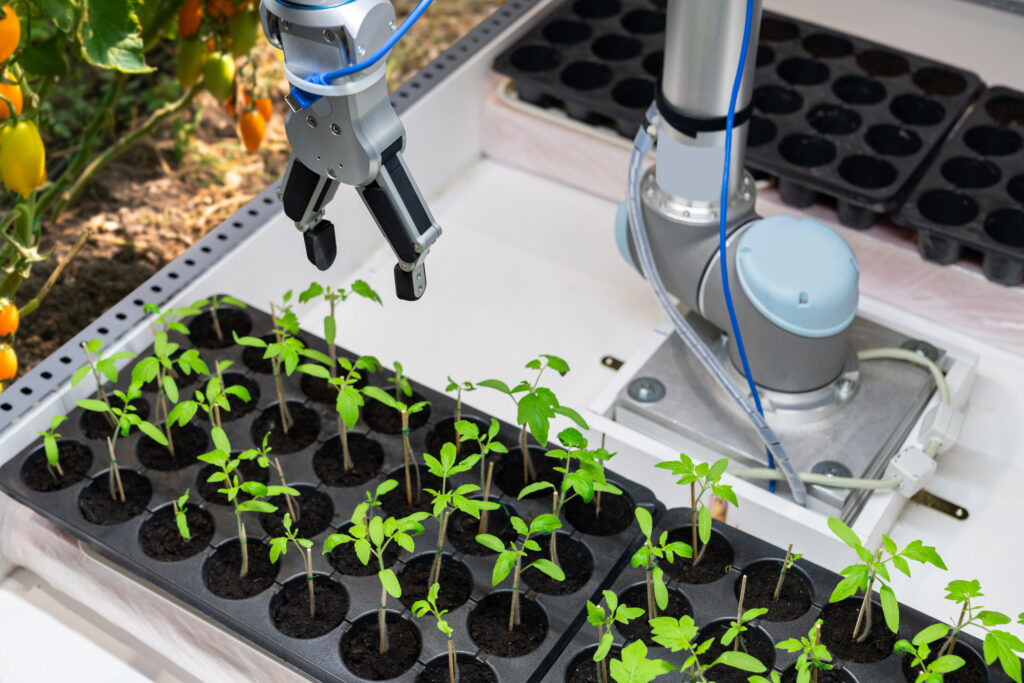In a recent case study, we detailed how cable-systems manufacturer HELUKABEL helped automate a vertical-farming installation: Cables satisfy the unique demands of vertical farming.

In contrast with approaches to optimize the traditional farming of fields, automated greenhouses solutions eliminate issues associated with tight labor markets, guarding delicate or valuable crops, and the need to apply pesticides and herbicides to plants grown outdoors.

Such automated greenhouses often employ building automation with HVAC controls to hold temperature, humidity, air composition, and light to grow-stage setpoints; automated circuits to keep watering and nutrient formulations at comparable setpoints; and linear-motion systems as well as collaborative robots (cobots) and six-axis robots to transport plant flats, camera equipment, harvesting robotics, and other systems around greenhouse facilities.

Linear motion components are also key to many such operations. For example, multi-axis cartesian robots consisting of pre-engineered linear actuators in some cases move light and fan towers along rows of plants to optimize crop growth while reducing the number of plant-tending units required. Elsewhere, the approach is reversed: AGVs move racks of plants to workcells where greenhouse personnel can more readily reach and tend or even harvest the crop. Or such AGVs might take racks of plants to cartesian workcells employing vision-based inspection routines to catalog plant size and health. Then end effectors might test, spray, prune, and even harvest the crop. The latter arrangement adapts automated storage and retrieval system (AS/RS) iterations to greenhouses making efficient use of three-dimensional spaces with stacked crop rows stretching dozens of feet.
Where crop-tending equipment to maneuver around racks, pots, and tubs is shuttled along long crop rows, the linear motion components (due to the way they’re often exposed to dirt and moisture) must have rugged sealing and high load ratings — especially if operating near or transporting flats of plants or moisture-laden dirt, for example. Track-roller linear guides (in contrast with profile-rail linear guides) may be most suitable for their ability to bulldoze dirt aside upon each stroke. Especially long crop rows may also require linear motion assemblies having butt-joined linear rails to essentially form seventh-axis linear systems akin to those so common in automotive manufacture.
More agricultural-automation stories from linearmotiontips.com and Design World
The latest technologies for agriculture and off-highway automation
What are emerging sensor technologies for Agriculture 4.0?
How motion plastics can make agriculture sustainable
Growth industry: Automation in the burgeoning cannabis market
Top trends in linear motion technology: Part 1 of 2
Cannabis cultivation leverages modular automation stations
Automated farm equipment uses rugged linear components
Linear guides, power transmission, actuators see unexpected applications







Leave a Reply
You must be logged in to post a comment.